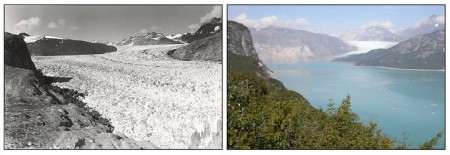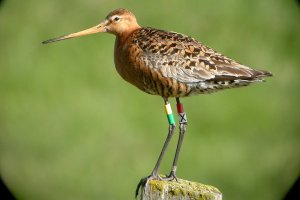
Sitting on my desk is a brochure published by NASA and the National Park Service of the Department of the Interior of the official government of the United States of America. Entitled, “Climate Change in the National Parks” it begins with this quote — in large italicized print — from the Intergovernmental Panel on Climate Change:
Warming of the climate system is unequivocal, as is now evident from observations of increases in global average air and ocean temperatures, widespread melting of snow and ice, and rising global sea level.
Open the brochure and you read, “Scientists tell us there is little doubt that human activities are having a major impact on the atmosphere and ecosystems of our planet.”
Carbon dioxide levels, this publication of the United States government tells us, are higher now than any time in the past 650,000 years. And rising.

Carbon Dioxide Levels
Higher temperatures in spring and summer bring earlier and faster runoffs and more frequent and more intense wild fires. The pikas of Yosemite National Park are in danger of extinction because they have to keep moving higher to get to the cool microclimate they need to live. Soon they’ll be at the top with no where else to go. At Bandelier National Monument the temperatures coupled with a drought brought infestations of bark beetles which are slaughtering the trees. In Yellowstone National Park pine beetles are killing whitebark pines whose seeds are a critical food source for the grizzly bears and birds. At Joshua Tree National Monument the cool winters and freezing temperatures the trees need to flower and set their seeds are getting too warm for their survival and the Joshua trees that give the place its name are dying so fast there soon may be no more in the park. The glaciers in Glacier National Park will be completely gone in 20 years. Photographs of Muir Glacier in Glacier Bay National Park taken in 1941 and 2004 prove that the planet is melting. Rising sea levels threaten the freshwater wetlands that are the Everglades National Park.

Muir Glacier Melting
According to our own government climate change is real and humanity is, “. . . having a major impact on the atmosphere and ecosystems of our planet.”
It’s official now. The United States of America says so. The climate is changing and we are contributing in a big way. It is time to get busy. Tempus fugit.
I leave you with a last quote from the brochure,
What is the use of a house, if you haven’t got a tolerable planet to put it on?
Henry David Thoreau
_______________
The brochure can be downloaded here.
NASA maintains two web sites about climate change here and here.
 Birds are migrating earlier and earlier each year, and scientists have long suspected that climate change is responsible. A new study by researchers at the University of East Anglia in England shows that individual birds migrate like clockwork, but nesting and hatching are happening earlier as a result of warmer temperatures, and this appears to be linked to the advancing of overall migration patterns.
Birds are migrating earlier and earlier each year, and scientists have long suspected that climate change is responsible. A new study by researchers at the University of East Anglia in England shows that individual birds migrate like clockwork, but nesting and hatching are happening earlier as a result of warmer temperatures, and this appears to be linked to the advancing of overall migration patterns.





